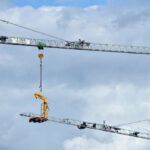The integration of IoT in construction equipment asset tracking is becoming increasingly important for businesses in the industry. IoT technology provides real-time data on a variety of assets, allowing for better informed decisions, improved asset efficiency, and improved safety. This article will explore the impact of IoT integration in construction equipment asset tracking, with a focus on how the technology can benefit businesses.
What Is IoT?
IoT stands for the “Internet of Things”, and is a network of physical devices, vehicles, buildings, and other items embedded with electronics, software, sensors, actuators, and network connectivity that enable these objects to collect and exchange data. The data collected by these devices can be used to provide information on the performance of equipment, improve safety, and reduce costs.
Benefits of Using IoT in Construction Equipment Asset Tracking
The use of IoT in construction equipment asset tracking provides a number of benefits, including:
- Real-time data: With IoT sensors, businesses can get real-time data on the performance of their equipment, allowing them to make informed decisions and take proactive action to improve efficiency.
- Improved safety: IoT sensors can also help improve safety by providing data on the performance of equipment, as well as alerting businesses to potential hazards.
- Reduced costs: By monitoring the performance of equipment, businesses can reduce their operational costs by identifying and preventing problems before they occur.
- Improved asset efficiency: IoT sensors can help businesses maximize the efficiency of their assets by providing data on the status of equipment and helping to identify potential issues before they become problems.
How IoT Can Help in Construction Equipment Asset Tracking
IoT technology can help in construction equipment asset tracking in several ways. First, by providing real-time data on the performance of equipment, businesses can make informed decisions and take proactive action to increase efficiency and reduce costs. Second, by providing data on the status of equipment, businesses can identify potential issues before they become costly problems. Finally, IoT technology can also help to improve safety by providing data on the performance of equipment and alerting businesses to potential hazards.
Conclusion
The integration of IoT in construction equipment asset tracking provides a number of benefits, including real-time data, improved safety, reduced costs, and improved asset efficiency. By providing real-time data on the performance of equipment, businesses can make informed decisions and take proactive action to increase efficiency and reduce costs. Additionally, IoT technology can also help to improve safety by providing data on the performance of equipment and alerting businesses to potential hazards. The use of IoT in construction equipment asset tracking is becoming increasingly important for businesses in the industry, and its impact can be seen in improved efficiency, safety, and cost savings.





